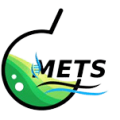IP Ratings
Many products go through variety of testing. These tests includes product safety, electromagnetic compatibility, vibration tests and many other. IP testing or Ingress Protection testings means classifying the degrees of protection from solid objects and liquids afforded by electrical equipment and enclosures. Ingress protection testing helps determine whether a particular product is going to function appropriately when placed in the field.
At METS Lab,
· We are accredited with ISO/IEC 17025 , and the besting testing labs in UAE and other region like Qatar, Abu Dhabi and UK
· We perform IP ratings for the products as per international standards IEC-60529
· We are fully equipped with expertise for IP ratings for all the electrical equipments
Ingress Protection testing, or IP testing, tests a product’s ability to protect against “ingress,” that is, the infiltration of water, dust and foreign objects.
Ingress protection ratings are standardized ratings that are used to describe the type and degree of ingress protection that a particular item possesses. The ratings come in two sets: One is for foreign objects and dust (that is, solid bodies), and the other is for liquids (such as water).
Each rating starts with “IP,” which stands for ingress protection. The first number after “IP” pertains to the rating against ingress by foreign objects and dust. The second number refers to protection against ingress by liquids. When addressing either one of these two types of contaminants, the remaining type is identified with an X. For example, IP1X pertains to a rating of 1 against ingress by foreign objects and dust, and the X indicates the rating for ingress against liquids is not given. Note that an X does not indicate zero protection.
Here are the standard ratings for ingress by foreign objects and dust how to interpret them:
- IP0X: This rating indicates the item is not protected at all against ingress from foreign objects.
- IP1X: This rating stipulates the item is protected against access from the back of a hand and solid foreign objects that are greater than 50 mm (about 2 inches). This is substantiated by ensuring a 50 mm probe has adequate clearance from hazardous parts and doesn’t fully penetrate the item.
- IP2X: This rating indicates that any hazardous parts cannot be accessed by a finger or solid objects greater than 12.5 mm (about half an inch). This is tested using a “jointed finger” that is 12 mm to 80 mm long.
- IP3X: This rating is given for items in which hazardous parts cannot be accessed using a tool, such as a screwdriver, or by solid foreign objects greater than 2.5 mm (about one-tenth of an inch). This is verified using a 2.5 mm access probe, which cannot penetrate the item.
- IP4X: This rating applies to items in which hazardous parts cannot be accessed even with a wire, or foreign objects greater than 1.0 mm. This is tested using a 1.0 mm access probe and by inspection to ensure any dust that enters would not interfere with the part’s functionality.
- IP5X: This rating applies to hazardous parts that can’t be accessed, even with a wire, and protection against ingress from dust is also applicable. This is tested using a 1.0 mm access probe and by inspection to ensure any dust that enters would not interfere with the part’s functionality.
- IP6X: There can be no ingress of dust at all for this rating. Otherwise, it is similar to IP5X with the exception that the item is completely sealed off from dust.
Next, here are the ratings for ingress by liquids:
- IPX0: This rating indicates the item is not protected at all against ingress by liquids.
- IPX1: This rating illustrates the item is protected against vertically-falling liquid drops, meaning any that fall on the item will have no harmful effect.
- IPX2: This rating extends IPX1 by ensuring protection against falling liquid drops at an angle up to 15 degrees.
- IPX3: This rating is given when an item is safe from ingress from spraying liquid. This is tested by spraying water at an angle up to 60 degrees of vertical and establishing that no harm came from this. The spray can come in an oscillating pattern with a flow rate that depends on the item tested.
- IPX4: This rating extends IPX3 to include protection against ingress from splashing liquids. It is tested by establishing that splashed water has no harmful effect on the item.
- IPX5: This rating applies to items that are protected against ingress from jets of liquid. It is given after testing with water jets, and it shows there were no harmful effects.
- IPX6: This rating is given for items that can provide protection against ingress from powerful jets of liquid. It’s an extended version of IPX5. The water pressure in this test can reach 14.5 pounds per square inch (PSI).
- IPX7: This rating goes further and indicates protection from temporary immersion in liquids. The rating is given after immersing an item in 1 meter of water for 30 minutes with no harmful effects.
- IPX8: This rating extends the IPX7 rating for water immersion to a greater depth and longer periods of time. The conditions of the water immersion are agreed upon between the manufacturer and the testing facility. The specifications have to be marked plainly on the product.
These ratings are established in an ANSI test standard called IEC 60529. Some rating systems extend the second number to a possible 9, which indicates protection from steam-jet cleaning.
Testing is verified in each case by a testing engineer, whose job it is to inspect the tested item immediately after the test is completed to determine the result. It’s very important that the test engineer be well-trained and knowledgeable in conducting the test and reporting the results.
Thus METS Lab is a complete solution for all your lab analysis


